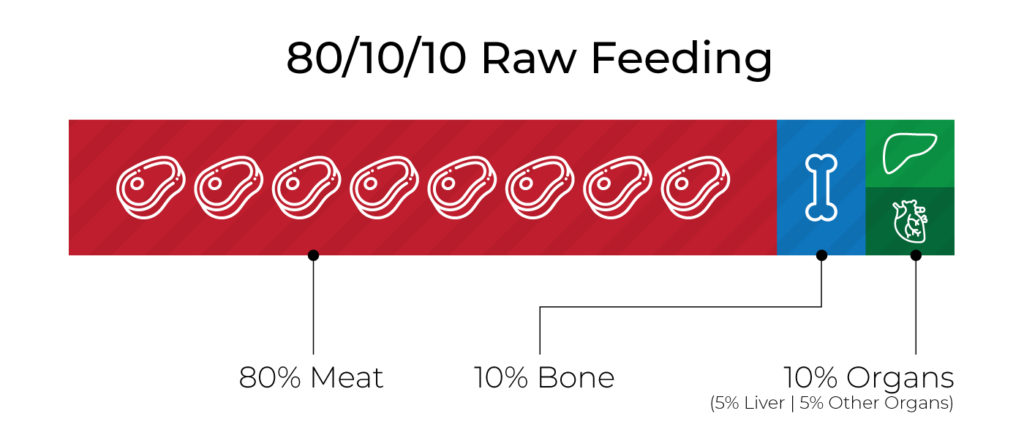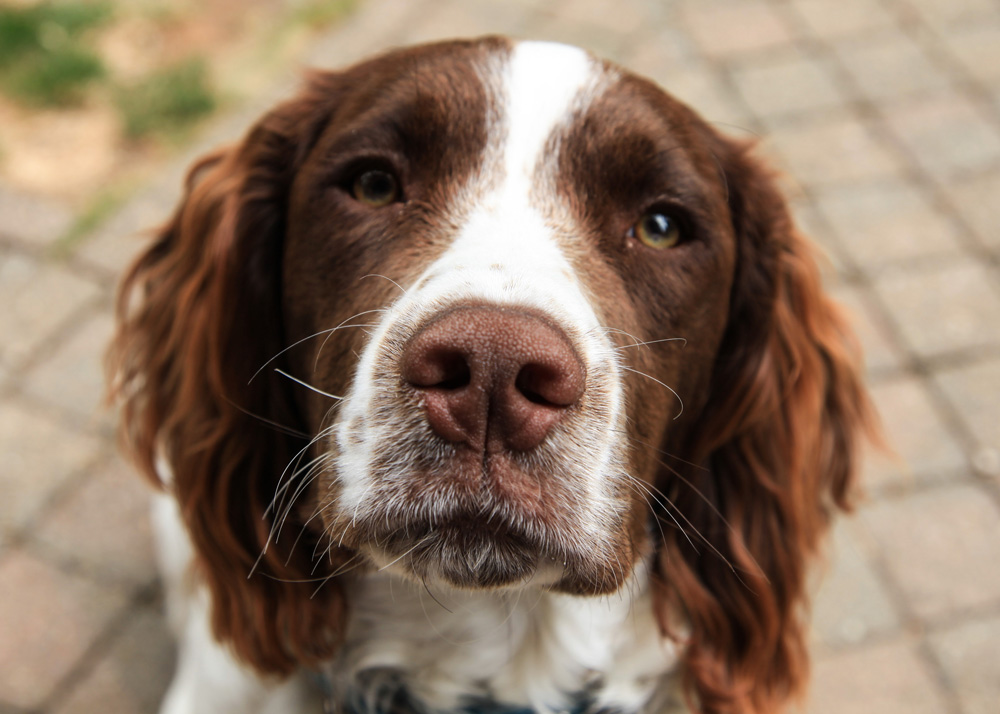Raw dog food diets have been gaining in popularity in the last 20 years or so, but they are still a controversial subject. In 1993, Australian veterinarian Ian Billinghurst coined the term BARF diet (no, not that kind of barf…). It stands for Biologically Appropriate Raw Food. This idea stems from the fact that your dog’s ancestors ate a 100% raw and natural diet, and that this is the best way to give your dog proper nutrition. This is a highly debated topic, but there is no doubt that a raw diet does have benefits for both you and your dog.
Benefits of Raw For Your Dog
- Helps Maintain Ideal Weight
- Shinier Coat
- Cleaner Teeth
- Reduces Risk of Arthritis and Hip Dysplasia
- Improved Immunity
- Increased Energy Levels
Benefits for You
- Healthier Pet
- Fewer Vet Visits
- Less Shedding
- Healthier Stools, Less Odor
- Helps Prevent Fleas & Ticks
- Can Help Reduce or Eliminate Prescriptions
Our Favorite Place to Buy Raw Dog Food Online
Raw Paws has been making the healthiest pet food, treats, chews, and supplements practical, affordable, and accessible for pet parents since 2014.
They have a wide variety of:
They ship directly to your door for free and even help you create a meal plan to provide your dog with a balanced diet. Their customer service team is always there to help and answer your questions on your raw food journey.
They have incredibly high standards and their customers rave about the quality of the product:
- USA Raised
- USDA Inspected
- Antibiotic Free, GMO Free, All Natural
- Grass Fed & Pasture Raised
- No Added Hormones, No Fillers, No Additives, No Preservatives
- Never Cooked, Minimally Processed
- Complete & Balanced
- Gluten Free / Grain Free
- Wild Game
- Humanely Raised
Best of all Raw Paws is affordable. It can be expensive to source all of these ingredients from good sources on your own. The convenience of online ordering and their bundle deals makes it an easy choice.
How to Begin Raw Feeding
- Where To Get Raw Dog Food
- The easiest and most convenient way to get raw dog food is online, and our favorite place is RawPawsPetFood.com. If you prefer to do your shopping offline, many small pet supply retailers carry various forms of raw dog food. You can also find a local butcher to get high quality meats, bones and organs.
- How To Transition to Raw Dog Food
- It’s best to introduce raw food to your dog’s diet slowly to ensure she tolerates it well. Feeding your dog 75% of the old food and 25% raw is a good way to start and then slowly increase to 50/50, then 75/25, and then 100% raw as your dog’s stool normalizes. It should take 2-3 weeks for your dog to fully adapt to a raw diet. Some dogs are more sensitive and may take a bit longer. If your dog tends to be more sensitive to changes in diet try transitioning 10% at a time.
How to Ensure Proper Nutrition When Feeding Raw
If you’re purchasing your meats from a local butcher or grocery store, and you aren’t actively working towards building a Complete and Balanced diet, nutritional deficiencies can occur. Raw Paws has a huge selection of raw meats, bones and organs so you can create the ideal diet for your dog. When feeding raw remember to follow these guidelines:
- Sticking to the 80/10/10 rule when preparing meals for your dog is key. This is ideally 80% raw meat, 10% bone, and 10% organ meats (this should be about 5% liver and 5% other organs).
- Start with a single protein source. This helps your dog adjust to a raw diet without shocking their system.
- Portion size is important to help maintain healthy weight. Raw Paws has an excellent portion calculator on their site, and this is a great place to start whether you choose to purchase their products or not. You can adjust the portioning up or down if you notice unintentional weight change in your dog after she has fully transitioned to a raw diet.
- If you are switching from a lower quality food source, you my experience a detox effect as your dog transitions to the new diet. Be patient, but if you don’t see any improvement within a couple of weeks, a fully raw diet may not be best for your dog. Some dogs do better on a cooked diet but can still benefit from partial raw feeding or raw treats.

Cautions when switching to a raw diet
The benefits of raw feeding far outweigh the risks when done properly. It’s important to know your stuff before jumping in and introducing your dog to a raw diet. Here are the key factors to pay attention to:
Nutrition
If you aren’t actively working towards building a Complete and Balanced diet, nutritional deficiencies can occur. Always consult a veterinarian before adding any supplements to your dog’s diet. Sticking to the 80/10/10 rule when preparing meals for your dog is key.
Cross Contamination
Dogs and cats are equipped to handle far higher levels of bacteria in their digestive system than humans. From the moment the raw food enters their mouth, their saliva begins destroying harmful bacteria. Their digestive tracts are short and extremely acidic, which also reduces the risk of bacterial colonization.
Bacteria such as e.coli and salmonella, although not a health risk to your dog, can be present in their feces, dog bowl, and areas around your home exposed to the raw food. This could cause issues for children, the elderly, or immunocompromised members of your household. Proper handling and a stainless steel dog bowl can help reduce risk of exposure and cross contamination. If you are worried about cross contamination, sticking to red meats as opposed to poultry meats can help eliminate some issues, and you should always wash your hands.
Give a Dog A Bone? Yes! But make sure its safe…
Bones and bone meal can be a great way to get calcium, phosphorus and other minerals into your dog’s diet. However, DO NOT just feed your dog any old bone! Cooked bones (especially poultry and fish bones) should never be fed to dogs as they can splinter and cause choking, gastrointestinal distress, or even life threatening perforations of the intestinal tract.
Raw meaty bones and raw recreational bones are be a great way to clean your dog’s teeth and get some extra nutrition. It’s important to get the proper size bone for your dog and never leave them unattended with a bone. When the bone is chewed down to small chunks it can pose a choking hazard and should be discarded. Raw bones can be a great treat, just make sure to use the right kind and never leave your dog unattended with a bone!
A Note From the Editor
This content uses referral links. Please read our disclosure policy for more info.
